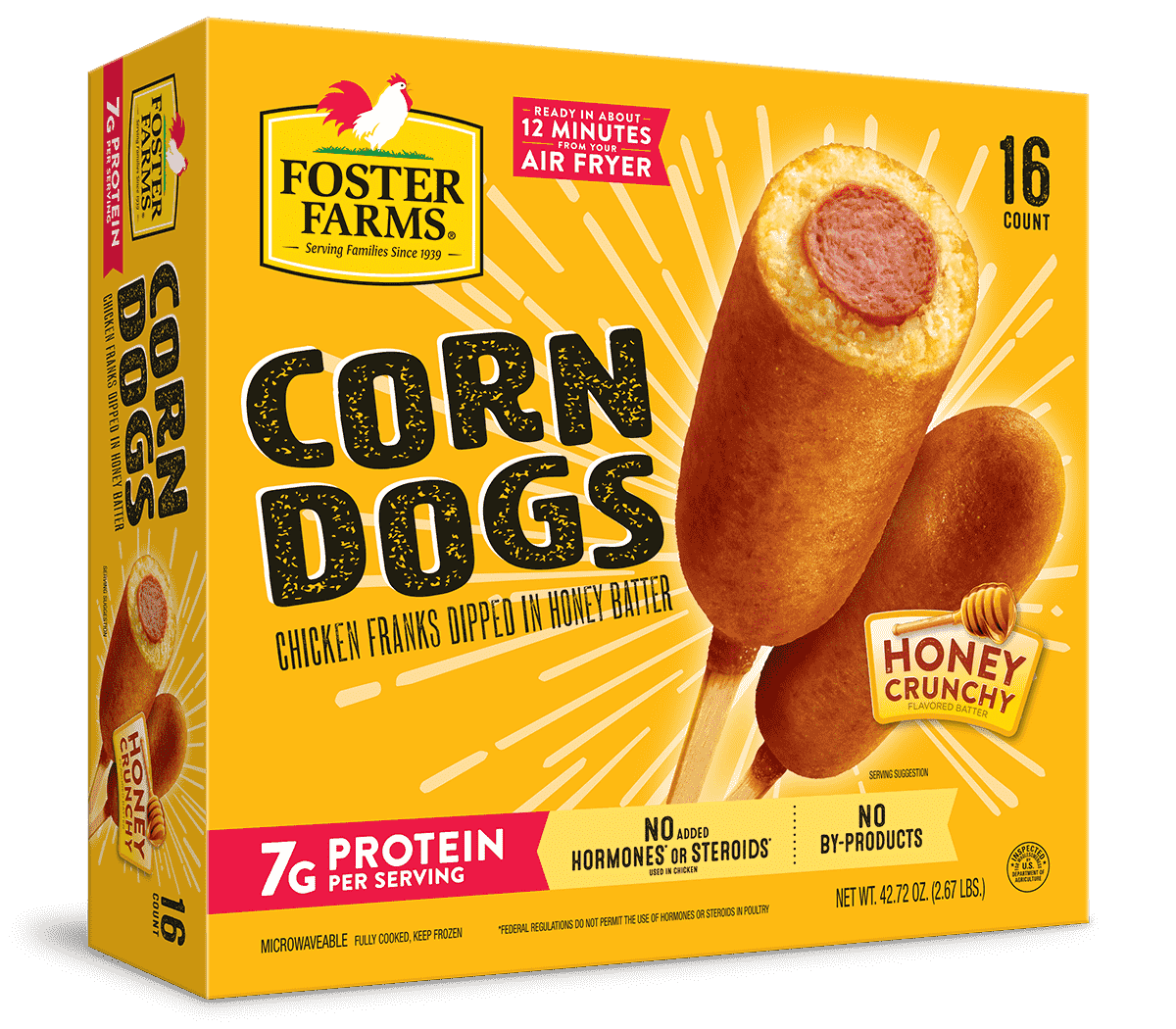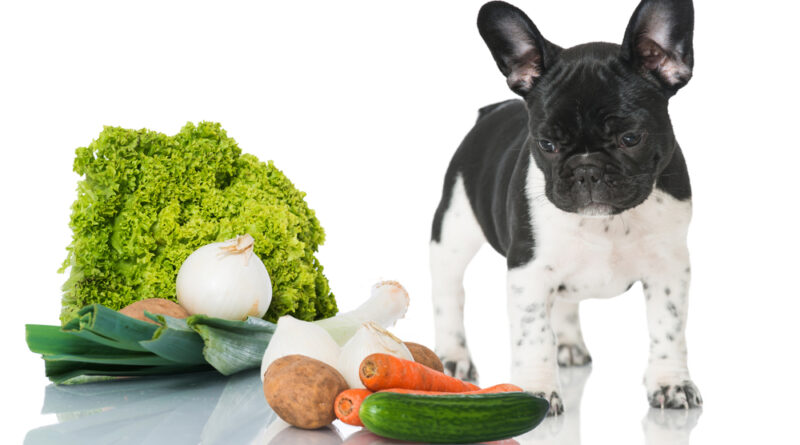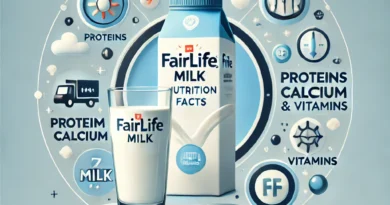How to Make Cold Nutritional Breakfast Bar for Dogs: Easy Guide
Making a cold nutritional breakfast bar for your dog is simple. This guide will help you create a healthy treat.
As dog owners, we all want the best for our pets. A healthy diet is key to their well-being. Sometimes, store-bought treats don’t meet our standards. Crafting a homemade breakfast bar ensures quality ingredients. It also allows you to cater to your dog’s tastes and nutritional needs.
This process is both fun and rewarding. Plus, your furry friend will love the tasty result. Ready to start? Let’s dive into making a nutritious breakfast bar for your dog.

Ingredients Needed
Creating a cold nutritional breakfast bar for your dog is a fun and healthy way to start their day. These bars are not only delicious but packed with essential nutrients. The key to making these bars lies in choosing the right ingredients. Below, we will dive into the necessary ingredients categorized into three main sections: Protein Sources, Fruits and Veggies, and Binding Agents.
Protein Sources
Protein is essential for your dog’s muscle growth and overall health. Here are some great protein sources to include in your breakfast bar:
- Cooked Chicken: A lean meat that provides high-quality protein.
- Cooked Turkey: Another lean option that is rich in protein and low in fat.
- Eggs: Full of essential amino acids and easy to digest.
- Greek Yogurt: Provides protein and probiotics, which are good for digestion.
- Cottage Cheese: A low-fat, high-protein option that is also rich in calcium.
Including a variety of protein sources ensures your dog gets a balanced diet. You can use a combination of these ingredients or stick to one type based on your dog’s preference and dietary needs.
Fruits And Veggies
Fruits and vegetables add essential vitamins, minerals, and fiber to your dog’s breakfast bar. Here are some safe and nutritious options:
- Blueberries: Packed with antioxidants and vitamins.
- Carrots: Rich in beta-carotene and fiber.
- Spinach: Contains iron and vitamins A, C, and K.
- Apples: High in fiber and vitamin C (remove the seeds and core).
- Sweet Potatoes: Loaded with vitamins and easy to digest.
Chop the fruits and veggies into small, dog-friendly pieces. This makes it easier for them to chew and digest. Mixing different fruits and veggies can add various flavors and nutrients to the bars, making them more appealing to your pet.
Binding Agents
Binding agents hold the breakfast bar together and add texture. Here are some effective and nutritious binding agents:
- Oats: A good source of fiber and easy to digest.
- Peanut Butter: Use unsalted and unsweetened varieties for a protein-rich binder.
- Bananas: Mash them up to add natural sweetness and binding properties.
- Pumpkin Puree: Adds moisture and fiber, making the bars easy to form.
- Coconut Oil: Helps in binding and adds a healthy fat source.
Mix these binding agents with the protein sources and fruits/veggies to form a consistent mixture. Adjust the quantities to get the right texture. The mixture should be firm enough to hold its shape but not too dry.
Preparation Steps
Making cold nutritional breakfast bars for your dog is a great way to ensure they get a healthy start to their day. These bars are easy to make and packed with essential nutrients. The preparation steps are simple and can be a fun activity. Let’s dive into the detailed steps to make these nutritious treats for your furry friend.
Mixing Ingredients
Start with the right ingredients. Choose items that are safe and healthy for dogs. Here is a basic list to get you started:
- 1 cup rolled oats
- 1/2 cup peanut butter (unsalted and xylitol-free)
- 1/4 cup honey
- 1/2 cup plain yogurt
- 1 mashed banana
- 1/4 cup shredded carrots
- 1/4 cup blueberries
Begin by mixing the rolled oats and peanut butter in a large bowl. Ensure the peanut butter is unsalted and xylitol-free. Next, add honey and yogurt to the mixture. Stir until all the ingredients are well combined. Mash the banana in a separate bowl until smooth. Add the mashed banana to the mixture. Then, fold in the shredded carrots and blueberries. Mix everything thoroughly. The mixture should be thick and sticky. Tip: You can add a bit of water if the mixture is too thick to handle. Make sure it is not too runny.
Shaping The Bars
Once your mixture is ready, it’s time to shape the bars. This step is crucial as it determines the final look of your breakfast bars. Follow these steps:
- Line a baking tray with parchment paper.
- Spoon the mixture onto the tray. Spread it evenly using a spatula.
- Press down firmly to ensure the mixture is compact.
- Use a knife to score the mixture into bar shapes. This makes it easier to break apart once cooled.
Make sure the bars are not too thick. A thickness of about half an inch is ideal. This ensures they cool properly and are easy for your dog to eat. If you prefer, you can use silicone molds to shape the bars. This can add a fun twist and make the bars more appealing. Choose molds that are easy to remove the bars from once they are set.
Cooling Process
The final step is to cool the bars. This step helps the bars to firm up and makes them easier to handle. Follow these simple steps:
- Place the tray in the refrigerator for at least 2 hours.
- Check if the bars are firm to the touch. If not, leave them for another hour.
- Once firm, remove the tray from the refrigerator.
- Carefully break the bars along the scored lines or remove them from the molds.
Store the bars in an airtight container in the refrigerator. They can last up to a week. For longer storage, you can freeze them. Just remember to thaw them before serving to your dog. Quick Tip: Always supervise your dog when introducing new treats to ensure they enjoy them safely.
Nutritional Benefits
Making cold nutritional breakfast bars for your dog is a great way to ensure they start their day with a healthy meal. These bars are packed with essential nutrients that support overall health. Knowing the nutritional benefits of these bars can help you understand why they are a good addition to your dog’s diet.
Vitamins And Minerals
Vitamins and minerals are crucial for your dog’s health. They support various bodily functions and maintain a strong immune system. Here are some essential vitamins and minerals found in a good breakfast bar:
- Vitamin A: Supports vision and skin health.
- Vitamin B: Helps in energy production and red blood cell formation.
- Vitamin C: Boosts the immune system and acts as an antioxidant.
- Vitamin D: Promotes bone health by aiding calcium absorption.
- Calcium: Essential for strong bones and teeth.
- Iron: Important for blood health and oxygen transport.
- Magnesium: Supports muscle and nerve function.
Including ingredients like sweet potatoes, carrots, and spinach can provide these vitamins and minerals. This ensures that your dog receives a balanced diet with every bite.
Healthy Fats
Healthy fats are an important part of your dog’s diet. They provide energy and support cell growth. Here are some benefits of including healthy fats in breakfast bars:
- Omega-3 fatty acids: Promote a healthy coat and skin.
- Omega-6 fatty acids: Help with brain function and development.
- Monounsaturated fats: Improve heart health and reduce inflammation.
Sources of healthy fats include fish oil, flaxseeds, and chia seeds. These ingredients not only enhance the flavor but also contribute to your dog’s overall well-being.
Digestive Health
Good digestive health is vital for your dog’s overall wellness. Breakfast bars can be made with ingredients that support digestion:
- Fiber: Helps regulate bowel movements and prevent constipation.
- Probiotics: Promote a healthy gut microbiome.
- Prebiotics: Feed the beneficial bacteria in the gut.
Ingredients like pumpkin, oats, and yogurt are excellent for digestive health. They ensure your dog has a happy tummy and absorbs nutrients effectively. Creating cold nutritional breakfast bars with these ingredients not only makes for a convenient meal but also ensures your dog gets the best start to their day.
Flavor Variations
Cold nutritional breakfast bars for dogs are a convenient and healthy way to start your pup’s day. These bars are easy to make and can be customized with various flavors to suit your dog’s taste. Experiment with different ingredients to keep your dog’s diet exciting and nutritious. Here, we will explore some flavor variations to make these breakfast bars even more appealing.
Fruit Combinations
Adding fruits to your dog’s breakfast bars not only enhances the flavor but also provides essential vitamins and minerals. Here are some fruit combinations that can be both delicious and healthy for your furry friend:
- Apple and Blueberry: Apples are rich in fiber and vitamins A and C, while blueberries are packed with antioxidants. Ensure the apple is cored and sliced thinly.
- Banana and Strawberry: Bananas provide potassium and energy, while strawberries are a great source of vitamin C and fiber. Mash the banana and chop the strawberries for easy mixing.
- Pumpkin and Cranberry: Pumpkin is excellent for digestion, and cranberries support urinary health. Use pure pumpkin puree and dried cranberries without added sugars.
Here’s a simple table to guide you on the appropriate quantities:
| Fruit Combination | Quantity |
|---|---|
| Apple and Blueberry | 1/2 apple, 1/4 cup blueberries |
| Banana and Strawberry | 1/2 banana, 1/4 cup strawberries |
| Pumpkin and Cranberry | 1/4 cup pumpkin puree, 2 tbsp cranberries |
Protein Alternatives
Proteins are crucial for your dog’s muscle development and overall health. Adding various protein sources to the breakfast bars can make them more nutritious. Here are some protein alternatives to consider:
- Chicken: Boiled and shredded chicken is a lean protein source that is easy to digest.
- Greek Yogurt: This is a great source of protein and probiotics. Choose plain, unsweetened yogurt.
- Peanut Butter: Dogs love peanut butter, and it’s rich in protein. Make sure it is unsweetened and free from xylitol.
Here’s a table for the protein options and their respective quantities:
| Protein Source | Quantity |
|---|---|
| Chicken | 1/4 cup shredded |
| Greek Yogurt | 2 tbsp |
| Peanut Butter | 1 tbsp |
Seasonal Ingredients
Using seasonal ingredients can add variety and freshness to your dog’s breakfast bars. Seasonal produce is often more nutritious and affordable. Here are some seasonal ingredients to consider:
- Spring: Carrots and peas are great choices. Carrots are rich in beta-carotene, and peas provide fiber and vitamins.
- Summer: Watermelon and cucumbers are hydrating and refreshing. Ensure the watermelon is seedless, and cucumbers are peeled.
- Fall: Sweet potatoes and apples are abundant. Sweet potatoes are full of fiber and vitamins, while apples offer a sweet crunch.
- Winter: Butternut squash and cranberries are perfect. Butternut squash is rich in vitamins A and C, and cranberries support urinary health.
Here’s a table to help you with the quantities of seasonal ingredients:
| Season | Ingredient | Quantity |
|---|---|---|
| Spring | Carrots, Peas | 1/4 cup each |
| Summer | Watermelon, Cucumbers | 1/4 cup each |
| Fall | Sweet Potatoes, Apples | 1/4 cup each |
| Winter | Butternut Squash, Cranberries | 1/4 cup each |
Storage Tips
Making cold nutritional breakfast bars for your dog can be a fun and healthy way to start their day. But, knowing how to store these bars properly is crucial to maintaining their freshness and nutritional value. Here are some helpful storage tips.
Refrigeration
Once you have prepared your cold nutritional breakfast bars, refrigeration is a key step. Storing the bars in the refrigerator helps to keep them fresh and safe for your dog to eat. Follow these tips:
- Use airtight containers: Place the bars in airtight containers to prevent moisture loss and odor absorption.
- Keep in the main compartment: Store the container in the main compartment of the fridge, not the door, to ensure a consistent temperature.
- Label the container: Always label the container with the date you made the bars. This helps you keep track of their freshness.
Refrigeration Time Chart:
| Storage Method | Duration |
|---|---|
| Refrigeration in airtight container | Up to 7 days |
Freezing Options
If you have made a large batch of cold nutritional breakfast bars, freezing them is a great option. Freezing helps to extend the shelf life without compromising the nutritional value. Here are some effective freezing tips:
- Pre-freeze on a tray: Place the bars on a baking sheet and freeze them for an hour. This prevents them from sticking together.
- Transfer to freezer bags: After pre-freezing, place the bars in freezer bags. Squeeze out as much air as possible before sealing.
- Label with date: Clearly label each bag with the date of freezing.
Freezing Time Chart:
| Storage Method | Duration |
|---|---|
| Freezing in freezer bags | Up to 3 months |
Shelf Life
Understanding the shelf life of your dog’s breakfast bars ensures they are always getting the freshest treats. Here’s a breakdown of how long these bars can be stored:
- Room temperature: If kept at room temperature, they should be consumed within 2 days.
- Refrigerated: As previously mentioned, refrigerated bars last up to 7 days.
- Frozen: When frozen, the bars can last up to 3 months.
To make sure your dog gets the most benefit from these bars, always check for signs of spoilage. Look for changes in color, texture, or smell. If any bars appear to be off, discard them immediately. Storage Summary Table:
| Storage Method | Duration |
|---|---|
| Room temperature | Up to 2 days |
| Refrigeration | Up to 7 days |
| Freezing | Up to 3 months |

Serving Suggestions
Cold nutritional breakfast bars for dogs can be a fantastic way to ensure your furry friend starts the day with a healthy treat. These bars are not only easy to make but also offer a balanced mix of nutrients. Serving these bars properly can enhance their benefits. Here are some serving suggestions to help you make the most of these nutritious treats.
Portion Control
It’s important to give your dog the right amount of food. This ensures they get the needed nutrients without overeating. For breakfast bars, portion control is key. It keeps your dog healthy and prevents weight gain. Consider your dog’s size and weight:
- Small Dogs (under 20 lbs): 1/2 bar per serving
- Medium Dogs (20-50 lbs): 1 bar per serving
- Large Dogs (over 50 lbs): 1 1/2 bars per serving
Check the ingredients and caloric content of the bars. Adjust the portion size if needed. Always monitor your dog’s reaction to new foods. Ensure they do not have any allergies. Table for Portion Control:
| Dog Size | Weight | Portion Size |
|---|---|---|
| Small | Under 20 lbs | 1/2 bar |
| Medium | 20-50 lbs | 1 bar |
| Large | Over 50 lbs | 1 1/2 bars |
Remember, dogs have different needs. Adjust portions based on their activity level. Consult your vet if unsure.
Mixing With Regular Food
Mixing breakfast bars with regular food can be a smart way to introduce new flavors and nutrients. It keeps your dog’s diet varied and interesting. Here are some tips:
- Crush the Bar: Break the bar into small pieces. Sprinkle it over their regular food. This adds texture and taste.
- Mix with Wet Food: Combine the bar with wet food. This makes it easier to eat. It also enhances the flavor.
- Use as a Topper: Place small pieces on top of their meal. This can entice picky eaters to finish their food.
Another idea is to alternate between the bar and regular food:
- Serve the breakfast bar in the morning.
- Provide regular food in the afternoon and evening.
Ensure your dog has a balanced diet. Mixing breakfast bars with regular food can help achieve this. Always check for any adverse reactions. Keep an eye on your dog’s overall health and wellness.
Treat Time Ideas
Breakfast bars can also be used as treats. This makes them versatile and fun for your dog. Here are some creative treat time ideas:
- Training Rewards: Use small pieces of the bar as rewards during training sessions. This keeps your dog motivated.
- Interactive Toys: Place pieces of the bar inside interactive toys. This provides mental stimulation and keeps your dog engaged.
- Frozen Treats: Freeze the bar for a cool summer treat. This can help soothe teething puppies or cool down an overheated dog.
Consider using the bars during special occasions:
- Birthdays
- Holidays
- After a vet visit
Using breakfast bars as treats can make any day special. It also promotes good behavior and provides a nutritional boost. Always ensure the treats are given in moderation. Keep your dog’s overall diet balanced and healthy.
Common Mistakes
Creating cold nutritional breakfast bars for your dog can be a great way to give your furry friend a healthy start to their day. But, many pet owners make common mistakes that can affect the quality and safety of these treats. Understanding these mistakes can help you make the best breakfast bars for your dog.
Ingredient Substitutions
Choosing the right ingredients is crucial when making breakfast bars for your dog. Some common mistakes include using harmful or unsuitable substitutions. Here’s a list of ingredients to avoid:
- Chocolate – toxic to dogs
- Grapes or raisins – can cause kidney failure
- Xylitol – an artificial sweetener that is highly toxic
Instead, opt for dog-safe ingredients:
- Peanut butter (unsweetened and unsalted)
- Oats
- Pumpkin puree
- Blueberries
Substituting ingredients can lead to health issues or an unappetizing treat. Always check if an ingredient is safe for dogs.
Overmixing Issues
Overmixing the ingredients can affect the texture of the breakfast bars. When you mix too much, the bars can become dense and hard, making them difficult for your dog to chew. Follow these tips to avoid overmixing:
- Mix dry ingredients separately from wet ingredients.
- Combine both parts gently until just mixed.
- Use a spatula instead of an electric mixer.
By mixing gently, you ensure the bars stay light and easy to eat.
Incorrect Cooling
Cooling the breakfast bars correctly is essential to maintain their texture and taste. Improper cooling can result in soggy or overly hard bars. Follow these steps for proper cooling:
- After baking, let the bars cool in the pan for 10 minutes.
- Remove from the pan and place on a wire rack.
- Allow them to cool completely before cutting.
Proper cooling ensures the bars maintain their intended texture and are safe for your dog to enjoy.
Dog Owner Testimonials
Making cold nutritional breakfast bars for dogs is a great way to start their day on a healthy note. These bars are packed with essential nutrients and are easy to make. Many dog owners have tried these recipes and shared their positive experiences. Let’s dive into some testimonials from dog owners who have seen remarkable changes in their pets.
Success Stories
Dog owners have shared numerous success stories after introducing cold nutritional breakfast bars to their pets’ diets. Here are a few highlights: Emma from California: “My dog, Buddy, was a picky eater. I tried various foods, but he always seemed disinterested. After trying the cold breakfast bars, he eagerly waits for his breakfast. It’s been a game-changer.” John from Texas: “Our dog, Max, struggled with digestive issues. We started giving him homemade breakfast bars, and within a few weeks, his digestion improved significantly.” Many other dog owners have similar stories:
- Susan: “Bella’s coat became shinier and softer.”
- Michael: “Rocky’s energy levels have increased. He seems more playful and active.”
- Linda: “My senior dog, Daisy, has shown improved mobility since we switched to these bars.”
These testimonials highlight the positive impact of cold nutritional breakfast bars on dogs’ overall health and well-being.
Favorite Recipes
Every dog has its preferences. Here are some favorite recipes shared by dog owners: Peanut Butter and Banana Bars:
- 1 cup oats
- 1/2 cup peanut butter
- 1 mashed banana
- 1/4 cup honey
- Mix all ingredients and freeze for 2 hours.
Chicken and Sweet Potato Bars:
- 1 cup cooked chicken
- 1/2 cup mashed sweet potato
- 1/4 cup plain yogurt
- 1/4 cup oats
- Combine and freeze for 3 hours.
Blueberry and Yogurt Bars:
- 1/2 cup blueberries
- 1/2 cup plain yogurt
- 1/4 cup oats
- 1 tablespoon honey
- Blend and freeze for 2 hours.
These recipes are easy to make and loved by many dogs. They provide a nutritious start to the day.
Health Improvements
Dog owners have noticed significant health improvements in their pets after adding cold nutritional breakfast bars to their diets: Improved Digestion: Many dogs experienced better digestion. The natural ingredients in these bars help regulate bowel movements and reduce digestive issues. Increased Energy Levels: Dogs became more energetic. The balanced nutrients in the bars provide sustained energy throughout the day. Shinier Coats: Regular intake of these bars led to shinier and healthier coats. Essential fatty acids and vitamins contributed to better skin and fur health. Weight Management: Dogs maintained a healthy weight. The controlled portions and nutritious ingredients helped in weight management. These health improvements demonstrate the benefits of incorporating cold nutritional breakfast bars into a dog’s daily routine.
Frequently Asked Questions
What Ingredients Are In A Dog Breakfast Bar?
A dog breakfast bar typically includes oats, peanut butter, honey, and dog-safe fruits or vegetables. These ingredients provide essential nutrients. Make sure all ingredients are safe for dogs.
How Do You Store Homemade Dog Breakfast Bars?
Store homemade dog breakfast bars in an airtight container. Keep them in the refrigerator for up to a week. For longer storage, freeze them.
Are Cold Breakfast Bars Good For Dogs?
Yes, cold breakfast bars can be good for dogs. They offer a nutritious and refreshing treat, especially in warm weather. Ensure all ingredients are dog-safe.
Can I Customize Breakfast Bars For My Dog?
Absolutely! Customize breakfast bars by adding your dog’s favorite fruits or vegetables. Just ensure all additions are safe for dogs. Consult your vet if unsure.
Conclusion
Creating cold nutritional breakfast bars for your dog is easy. Follow the steps and use healthy ingredients. Your dog will love the tasty, nutritious treat. These bars provide essential vitamins and minerals. They are also great for maintaining your dog’s energy.
Making these at home ensures quality and freshness. Plus, you can customize them to your dog’s preferences. Enjoy bonding with your pet through homemade food. Try this recipe today. Your dog deserves the best!




